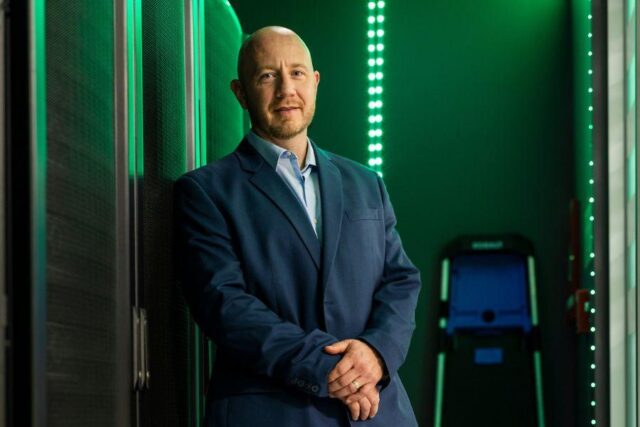By Kaylee Hayes | Reporter
Baylor is launching a Bachelor of Science in biomedical engineering in fall 2026 — the first step toward creating a full bioengineering department in the School of Engineering and Computer Science, according to Dean Daniel Pack.
Pack said the degree has been years in the making, answering a steady demand from students and families who have asked about biomedical options during campus tours.
“We wanted to do this right,” Pack said. “This will be our first stand-alone biomedical engineering degree.”
The new major will focus on engineering principles applied to human biology by combining mechanics, chemistry and physiology to prepare students for work in various fields.
Pack said the university began planning about two years ago, envisioning a program that could later grow into an entire bioengineering department. A map in his office outlines a five-to-seven-year goal for expansion.
“We believe [the new major] can make significant contributions in the area of human health,” Pack said. “Bioengineering is an essential part of that vision.”
Dr. Jonathan Rylander, biomechanics lecturer, helped lead the program’s curriculum committee and said the new major has been a long-term effort.
“We held off for a while because we wanted to build critical mass,” Rylander said. “We didn’t want to launch a new program if we only had a handful of faculty. We wanted it to be something excellent.”
Rylander said the existing biomedical concentration in engineering helped lay the groundwork, but the new major goes deeper, requiring courses in anatomy, physiology and biochemistry that give students a direct understanding of how engineering interacts with the human body.
Central to that effort is Dr. Brent Craven, a mechanical engineering professor who previously worked at the U.S. Food and Drug Administration, where he served as senior scientific adviser in the Center for Devices and Radiological Health. Before that, Craven taught and led computational research at Penn State.
“He’s lived all those worlds: research, regulation and education,” Rylander said. “He’s the perfect hire.”
Pack said Craven’s experience at the FDA where he helped evaluate and regulate medical devices positioned him to lead Baylor’s next chapter in biomedical research.
“He comes with both academic and federal experience that will help us navigate funding and compliance,” Pack said. “That perspective is invaluable.”
Craven said his transition to Baylor this fall has been energizing. After working on regulating medical-device safety, he said he wanted to return to teaching while continuing research that bridges engineering and medicine.
“At Baylor, I get to engage with students and collaborate more directly on clinical and experimental work,” Craven said. “It’s rewarding to see their curiosity meet real-world problems.”
Despite the biomedical engineering degree newly on the horizon, Pack said faculty in the school have already contributed to human health research through projects such as the mechanical-horse therapy device developed by Dr. Brian Garner. The system helps improve walking function for elderly individuals and people with disabilities by mimicking the rhythmic motion of horseback riding, Pack said.
“It’s an example of how Baylor engineering is already advancing human health,” Pack said.
As Baylor continues to grow its status as a Research 1 university, Pack believes the biomedical engineering program represents a pillar of its broader vision to blend education, innovation and purpose-driven science.
“This is a very intentional step forward,” Pack said. “It’s about equipping our students to serve society through engineering that improves lives.”
Craven said Baylor’s mission is what drew him in the first place.
“What excites me is the opportunity to help build something that lasts,” Craven said. “We’re not just starting a degree. We’re creating a program that could change how students see engineering and how engineering serves people.”


